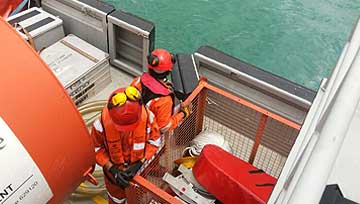
Oil Spill Response Limited (OSRL) provides our members with resources to respond to oil spills efficiently on a global basis. When activated, we form part of our client’s entire response efforts to reduce the impact of an oil spill. Here are some spills we have responded to recently.
Vessel collision south of Marina South
A collision occurred between a container ship and a barge on January 30, spilling about 400 metric tons of MFO (marine fuel oil) into the waters.
OSRL was mobilised four days after the spill on February 3 to assist with the clean up of the remaining oil slick. Vessels, personnel and equipment like booms and harbourbusters were deployed for the recovery and containment operation, which included waste management.
After two days, OSRL was demobilised.

Vessel collision off Sebarok Island – Pro activation
A collision between a containership and chemical vessel in the Singapore Straits off Sebarok Island, about 10 kilometres south of mainland Singapore on February 10 released about 80 metric tons of bunker fuel.
OSRL sent two personnel to the collision site for survey and found light sheen in the water. The oil trajectory was mapped and the spill situation was continuously monitored.
The Maritime Port Authority and other vessels were seen at the site spraying dispersant. OSRL was not activated subsequently.

Technical advisors deployed for oil leak into nearby water source
A road tanker accident resulted in a spill of four cubic metres of oil, which leaked into a nearby creek.
Two OSRL technical advisors were deployed onsite to determine the extent of oiling and provide advice on the existing cleanup operations to the Incident Command.
Thick vegetation around the creek posed difficulties for responders to gain access, but the slow flow rate of the creek allowed the oil to pool at natural collection points.
Preventive methods like booming and river damming (photo on the left) were used, while floating oil was recovered by the local workforce using scoops and buckets.
Bunting and sheeting was used to prevent secondary containment, while waste disposal was carried out in accordance with industry best practice.
The immediate response minimised the contamination to the water source. The entire cleanup process was well coordinated and demonstrated industry’s best practices in cleanup processes.




